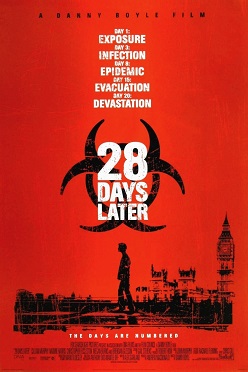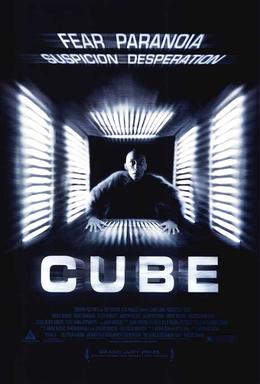Introduction
In this analysis I’ll be taking a look at Nina’s (Natalie Portman) journey through Black Swan. I’ll be analyzing why the swan is so important and the philosophical underpinnings that make Portman’s transformation so haunting. NOTE- this is a spoiler zone. I will be talking about plot deals intricately so if you haven’t watched the movie yet, but plan on it, don’t read past this.
The Swan
The film starts off with a shot of a girl doing ballet. We focus on just her feet, noticing her precise and technical execution. The background is dark- there’s almost a supernatural aspect to the dance happening. The camera encircles Nina and her partner- then as quickly as the dance begins,it ends. It was only a dream.
This first scene establishes the story of Swan Lake as the backdrop by which the film operates. Nina is the white swan, pure and innocent and what follows will be her tumultuous journey towards becoming the black swan. But the scene has a dual function- on top of establishing the perceptual metaphor of the movie- it highlights the significance of the play in Nina’s life. The role of Swan Queen is quite literally something she idolizes. Why? Because ballet is quite literally the only thing Nina has going for her.
The Repressed Subject
Art is a form of escape for Nina. As a subject she has been restricted in almost every avenue- forced into a scenario that necessitates action and urgency. She’s 28. At this age it’s make or break and can determine how far her career can really go.
The narrative set up establishes just how repressed every other aspect of her life is. Despite being an grown adult, she still lives with her mom. That by itself isn’t the problem – it’s that she and her mom have a relationship akin to one a mom has with an child about to go through puberty. It feels unnatural and highlights the way she’s been conditioned and brought up.
Erica is abusive. You can debate on whether or not her overprotective tendencies are partially justified, but she does more than enough to suggest that she’s been emotionally and psychologically damaging her daughter. She constantly insinuates that Nina’s sexuality must be protected. Sexual pleasure and questioning has been prohibited- cast aside by the parental Other that determines the boundaries the child is and is not allowed to cross. Every-time Nina has a sexual experience it turns into something horrifying. Symbolically, the loss of this sexual innocence marks a passage into an adult- so by restricting it- Erica can ensure her daughter stays attached to her at all times.
This is evidenced at multiple times:
1. Nina’s room doesn’t have a lock – which is why she’s had to come up with a make shift solution to keep her mom’s prying eyes out. This is also why she’s so sexually withdrawn. She never had a sense of privacy long enough to engage in that sexual discovery that happens in adolescence.
2. Whenever Nina goes out with Thomas, her mom insinuates that he’s touching her or abusing her. While the accusations become more and more accurate over time, her tone doesn’t feel like it comes from a place of love as much as possession. It feels like Nina’s sexuality is a possession that only she is allowed to control.
3. She literally slaps her daughter for saying that she had sex. Instead of trying to comfort her daughter or ensure that she was okay post experience, her first response is one of anger and indignation.
On top of this, we see through the mother-daughter interactions that Nina’s not allowed to disagree. When she makes Swan Queen, Erica buys her a cake to celebrate. Nina doesn’t want to eat it because she feels nervous- that’s understandable. But instead of responding like a normal parent should, Erica lashes out – threatening to throw the entire cake. It’s passive aggressive behavior meant to guilt and shame Nina.
Regardless of Erica’s motivation, the result is an alienated child- Nina never got a chance to grow up and has been reduced to ballet. But ballet also becomes an escape. She stays later and later at the practice hall, because it’s better than coming home to the rules and dictates that make it impossible for her to find herself. Ballet here is a line of flight- a break through the madness and shackles imposed upon her by her mother. By becoming a star she can leave- maybe her career can flourish and she can financially escape. Or maybe in the act of becoming a true star, she can feel a sense of self- one strong enough to resolve the anxiety and loathing she’s internalized and experienced. Whatever it is – it’s freedom. It’s the only thing she can control anymore.
Duality
But to get to this freedom- Nina has to master the duality inherent to the role of Swan Queen- a journey that requires a mastery of herself. As evidenced by her early characterization and mannerisms- we know why she’s so effective as the white swan. Her childlike innocence combined with her pressures causes her to remain innocent but fragile. However, the black swan is the diametric opposite to these attributes.
The black swan is seductive, alluring, and chaotic. As Thomas repeats, portraying it requires an dancer to lose themselves in their routine. He notes that the issue with Nina’s performance is not in its technical execution. Her technique is flawless. Rather, what’s missing is an emotional intensity. A pure burst of affect moving across the scene. Technicality demonstrates a mechanic kind of mastery, but in order for art to cause a kind of catharsis in the audience, it has to have an emotional resonance to it that can’t be described or explained- only felt. This is why Nina struggles- because she’s been stunted of experiences and interaction- she can’t tap into those feelings. How does one understand seduction without understanding love and loss of love?
Shadow Nina is her mind’s response to this lack of information. The doppelganger serves as the inner projection of what Nina thinks the black swan is. It’s her minds attempt at creating a persona of what she needs to master and embrace. But because it’s so different from her, she runs from it and is scared of its presence. However, she eventually “overcomes” this fear.

Instead of trying to control and be timid towards the situations stunting her she lets the intensity of her emotions to serve as the catalysts to her action. These manifest in her actions and her delusions. From an early scene in act one, we see a shadow Nina come about. This serves as the inner projection of what Nina thinks the black swan is.
When Erica starts to yell at her when Lily comes over, Nina stops trying to argue with her mom. Instead of cowering away from her and giving in she acts like a teenager and acts rebellious. In this moment of symbolic growth she gives in to her frustration and angst and decides to experiment and try new things. Since Lily’s introduction into the ballet troupe, Nina has come to view her as a stand-in for the black swan. Unlike her, Nina is free-flowing and flexible. Her personality matches the aesthetic of her dance. She’s flirty, seductive, and playful.
When Nina comes home and gets slapped- instead of cowering from her sexuality, she uses her rage to have “sex” with Lily. The scene might be steamy, but where it really shines is in its symbolic meaning. We know Lily isn’t real in this scene- she seems to be the same shadow delusion Nina has seen the whole film. She transforms from Lily to Nina back to Lily and then Nina again at the end. The point isn’t just to highlight how tenuous Nina’s relationship with reality is. Rather it shows how she’s forming her “black swan” self. Lily is a template for everything the black swan represents. Having sex with her is opening her up to the influence, The constant transformations reflect her absorbing the perceived characteristics .
This is also why Nina sees Lily having sex with Thomas during the night of the performance. It’s most likely a delusion- but needs to happen. If Lily was the white swan, and Thomas was her beau, then the story dictates that he’s “stolen” by the black swan, Lily. Nina’s projection is necessary to cement her place and to drive her transformation fully forward. Now that the white swan has seen her partners infidelity, she must die. Nina must allow herself to die, so that “black” Nina can be born.
Becoming-Swan
At the end of the second act, Nina walks into her dressing room and sees a delusion of Lily getting ready to take her place. In a jealous fit of rage, Nina kills Lily and then drags her body elsewhere. What really dies in this scene is the barrier between the white and black halves of Nina.
In killing Lily, Nina has rid herself of the black swan proxy. She no longer needs Lily there to learn from because she’s finally assimilated the perspective and feelings of the black swan. Even the weapon of choice here is a shard of the destroyed mirror- the mirror between the dual sides of Nina. She literally uses the shattered symbol of her multiple selves, to destroy and absorb the sensual and chaotic side of herself.
Her makeup becomes more realistic- her feathers feel like they literally are growing off of her. In this moment, Lily isn’t the held back and repressed child, incapable of taking her own actions. She has become the literal embodiment of the swans. Careful and meticulous but filled with a frenetic energy. Both white and black – by removing the barriers between the sides of her identity- she has become pure artistic experience. It’s why the violence and pain she goes through at the end don’t affect her. It’s why her eyes are in a daze as Thomas stares at her in awe.



For a few moments, she had transcended all limits, and gave way to a beautiful, but fleeting performance.








